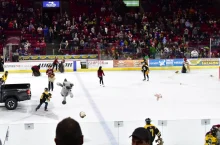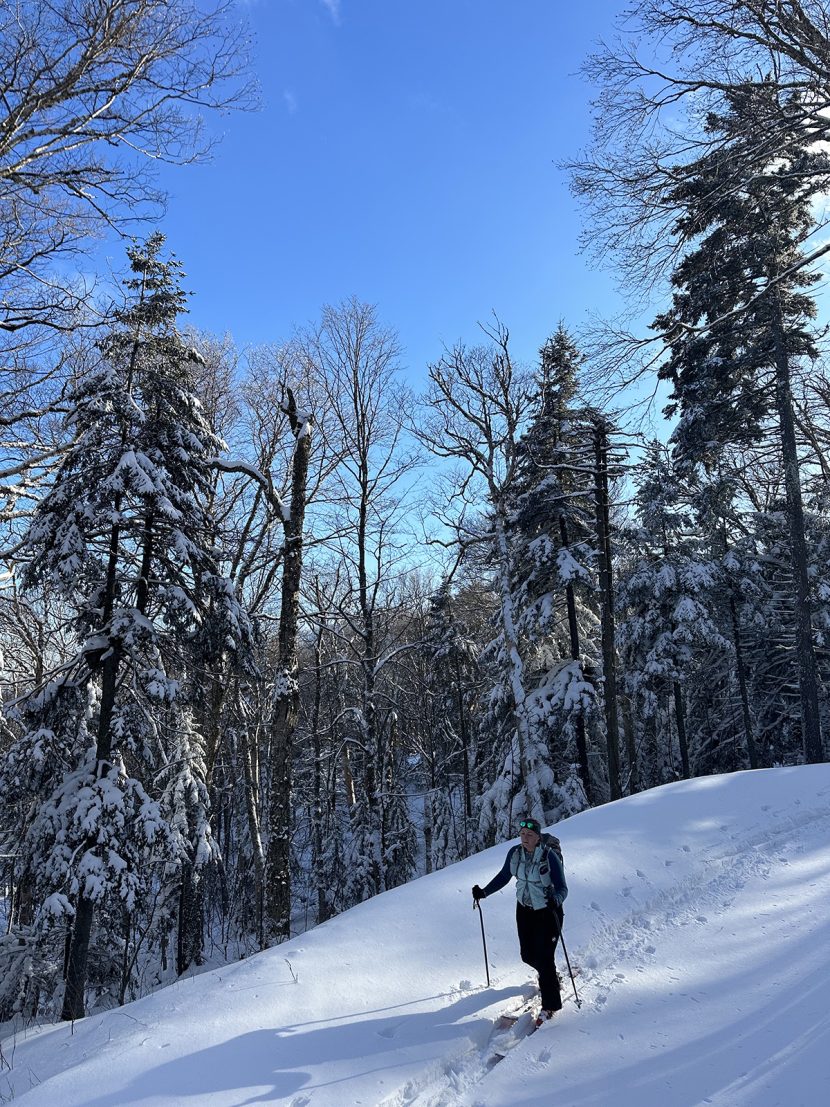Hunter Mountain (photo: Al Neubert) Ski areas in the lower Hudson Valley were in great shape with most of their terrain open. Holiday Mountain, in Thompson near Monticello, New York, was offering the entire triple chair side of the ski area’s terrain including the new Hackledam double black diamond slope. This is now the steepest […]
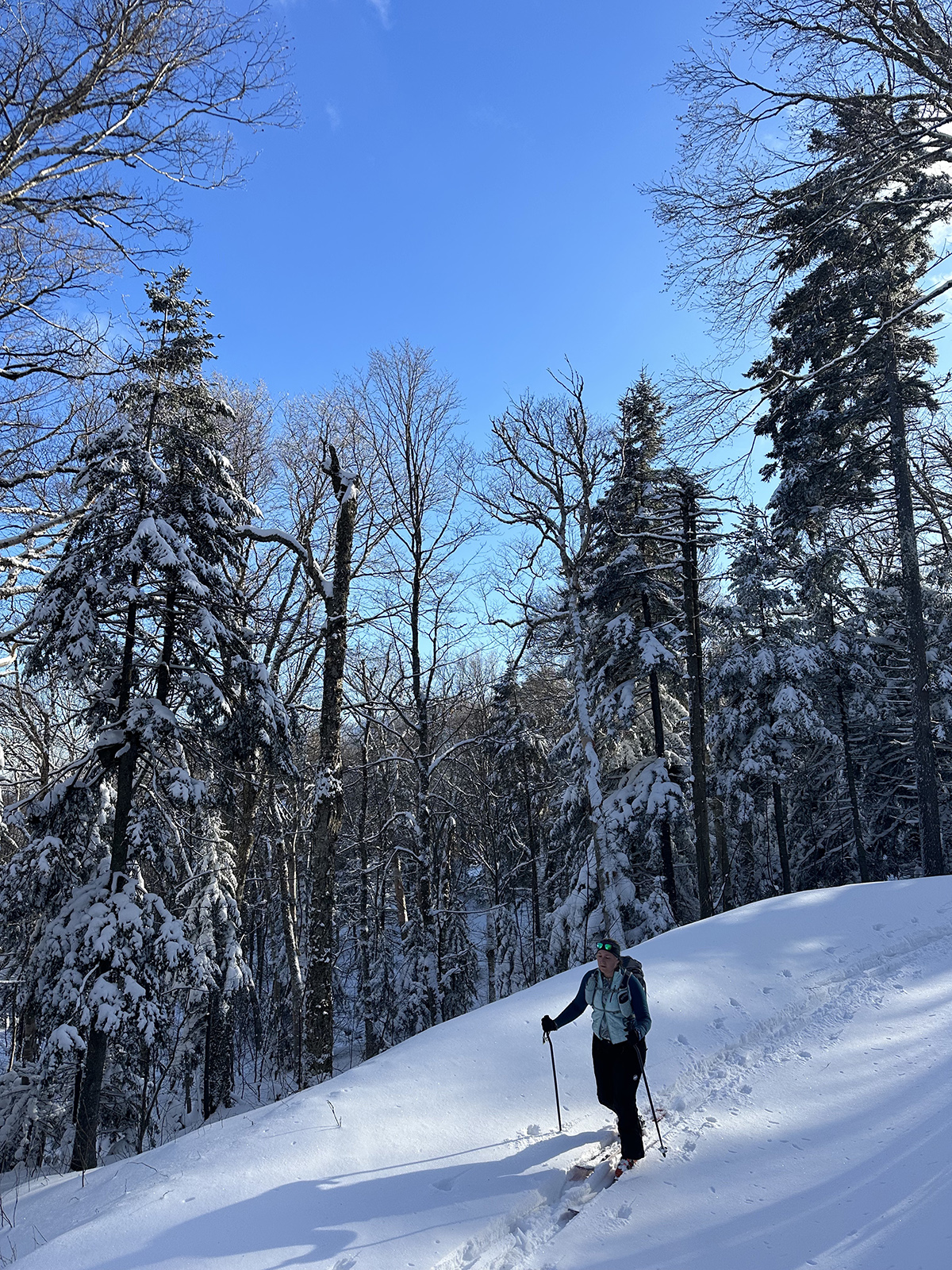

Ski areas in the lower Hudson Valley were in great shape with most of their terrain open. Holiday Mountain, in Thompson near Monticello, New York, was offering the entire triple chair side of the ski area’s terrain including the new Hackledam double black diamond slope. This is now the steepest slope south of the Catskills and Berkshires. It’s just as steep as Fool’s Delight at Thunder Ridge, in Patterson, New York, but three times the length with the sustained pitch. Trying to schuss it and hoping to ride out a run out won’t work because the trail bends to the right on the way down, before intersecting with the bottom of Roman Candle trail.
Speaking of skiing or snowboarding steep slopes, let’s do a quick review to put levels of difficulty into perspective. There are two ways to measure the steepness of a ski slope. One is by the degree of the angle and the other is by percentage. A slope with a 45 degree angle would be equal to a 100 percent gradient. That is super steep. The Streif in Kitzbuhel, Austria and site of the most famous downhill ski race of them all, the Hahnenkamm, has a maximum pitch at 38 degrees. The Swiss Wall, at the Avoriaz ski resort on the border between Switzerland and France is at an astonishing 45 degrees and it is filled with moguls the size of Volkswagen Beetle cars. Essentially, the outside of each mogul is a vertical drop to the next mogul.
by Albert Neubert
A typical expert slope at a U.S. ski resort is going to be in the 25 to 35 percent range. However, you have to consider that trail ratings are only relative to other trails at a particular ski area. As a result you may have a trail with a 15 to 20 percent gradient being labeled “expert” simply because it is the steepest at a specific resort. Gradients aside, the difficulty of a trail or slope really comes down to not only its pitch but its length and whether it has breaks on it where you can momentarily catch your breath.
I skied at Hunter again on Monday and conditions were even better but it was a dark, snowy, flat light day. I hate flat light because you cannot make out any features on trails surfaces. I hit several of what I call groomer “farts.” That’s where a grooming machine leaves a bump, ridge or hollow that is normally not a problem under sunny skies but when you can’t see it and hit such an imperfection, it can rattle your body from head to toe.
I skied at Hunter, in the northern Catskills last Friday and it was by far the best conditions I encountered so far this season. There were a couple of inches of natural snow groomed into the trail surfaces and there was no icy or hard pack surfaces on any of the runs I made during the two hours I was skiing. Basically, it was “hero” snow which allows even lower level skiers and snowboarders to feel like Olympians.
Think some natural snow and happy skiing and riding! You can contact me at asneubert@aol.com or you can visit my Instagram page @asneubert.
You also have to factor in conditions into how difficult a trail skis. Icy and frozen granular surfaces force skiers and snowboarders to be precise in their technique. Any mistake is magnified and can lead to real trouble quickly. Weather conditions play a role too. If it’s cloudy and snowing or raining, you will have to contend with flat light and poor visibility which now requires total concentration and skiing or snowboarding by “feel.”
Skiers and snowboarders enjoyed the best conditions of the season this past weekend. Serious cold allowed ski area operators at local areas and within day-trip range to produce incredible amounts of manmade snow. On and off snow squalls provided just enough natural snow to enhance surfaces. While it was very windy at times and bitter cold, snow surfaces were the best of the season. I’ve seen base depths on trails reach four to five feet in places which should allow those trails to survive long thaws.
In the Catskills, there are a number of trails that are rated double-black diamond and that are very demanding. They include Blockbuster, Freefall and Plunge at Plattekill. At Hunter, on the west side, you will find Claire’s, Westway and Annapurna. On Hunter’s main face there’s K27, Racer’s Edge and Upper Crossover. K27 and Upper Crossover are often left ungroomed and that leads to some serious and big moguls. Windham has Wolverine, Wedel, Wheelchair and The Wall. Across the Hudson, Catamount has its share of super steeps in trails like Catapult, Christopher’s Leap and Ripper.
Further north across New York and New England, expect to find peak snow conditions for the season. The further north you go you will find more and more natural snow. Most northerly ski resorts have picked up a foot plus of snow in the past week and it has been coming regularly with dumps of from two to six inches. Better yet, the natural snow is sticking around because of the cold weather. Last season and the two before that we were experiencing mild temps that reached into the 50s and 60s almost every week and that came along with rain with no ski area in the Northeast immune from the constant thawing.



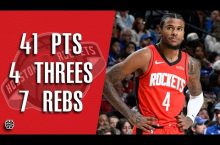
 #NBA #Basketball #JalenGree…
#NBA #Basketball #JalenGree…

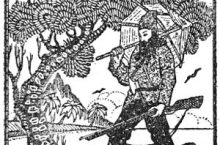
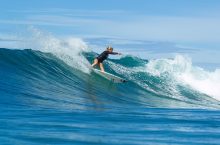
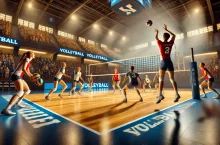





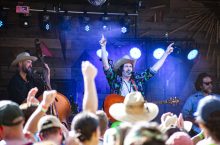
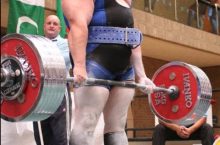
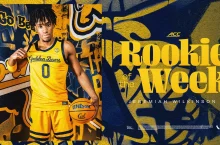





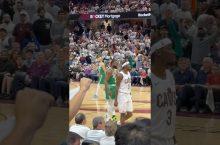

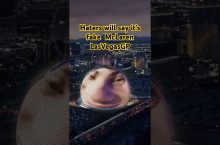
 #McLaren #F1 #Gingerbread #CapCu…
#McLaren #F1 #Gingerbread #CapCu…
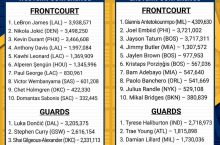
 #NBA #basketball #NBAXmas #Jalen…
#NBA #basketball #NBAXmas #Jalen…
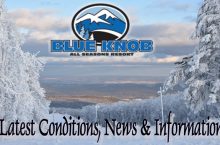





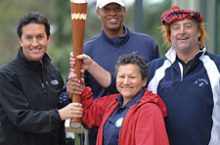




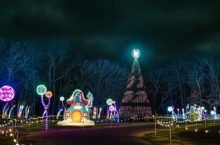

 #rugby #haka
#rugby #haka